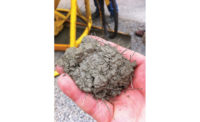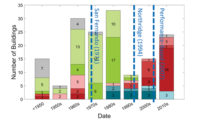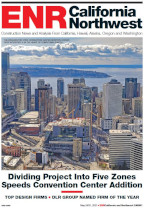Engineers' specific questions and concerns regarding the performance of the anchorage of the steel sections to the core walls prompted the most recent tests. The next round will investigate reducing the embedment length.
Many times, in large-scale and tall buildings from 240 ft to 500 ft, strength demands imposed on link beams due to wind or seismic loads exceed the capacity that reliably can be provided by reinforcing steel alone. In these instances, structural engineers consider using embedded steel shapes. Engineers have used similar steel beams when wind is the primary design load.
Until the UCLA tests, performed on March 15-16, data for link beams with embedded steel shapes were of limited value because only small-scale shapes had been tested. In the UCLA test, most beams exceeded—by a factor of 10 or more—previously tested beam sizes.
ASSEMBLY
The assembly tested represents a typical section of two walls, with a link beam spanning between them, in a building's upper story. "We are only testing one wall and one-half of the coupling beam. The beam is loaded at midspan between the two walls," says Wallace.
The composite beam is a reinforced-concrete beam with an embedded structural-steel wide-flange section. A composite beam combines the advantages of reinforced concrete and structural steel and also eliminates some drawbacks. For example, the reinforced-concrete portion provides stability to the structural-steel section, reducing the likelihood of local buckling. Also, there are no steel welds at critical connections—in this case, for example, the beam-wall interface.
The test specimen is roughly one-half scale, with a W12 x 96 steel section embedded in a 12-in.-wide x 18-in.-deep reinforced-concrete beam. Prior tests have been done primarily on small-scale, typical 4-in.-deep or 9-in.-deep steel sections, as opposed to 12-in.-deep sections. Also, the beams were embedded into large support blocks, instead of a wall.
"We are testing a beam about 23 times stronger than those tested earlier," says Wallace.
The beams are embedded into a shear wall, rather than in a large support block, that is 12 in. thick, 8 ft long and about 15 ft tall. "In our tests, moment and shear are applied to the wall to introduce stresses and strains into the wall. [This method] better replicates the actual field condition," he explains.
Plans call for three more tests to study the impact of varying the beam anchorage depth into the wall and possible ways to improve constructibility.











Post a comment to this article
Report Abusive Comment